
Soft science fiction tends to focus more on people and relationships than on technical details; more on humanity than technology (even though there’s usually some cool technology).
Science fiction author Poul Anderson, in Ideas for SF Writers, described H. G. Wells as the model for soft science fiction: “He concentrated on the characters, their emotions and interactions” rather than any of the science or technology behind, for example, invisible men or time machines.
Centuries ago, one small town in Germany disappeared and was never resettled. Tom, a historian, and his theoretical physicist girlfriend Sharon, become interested. By all logic, the town should have survived. What’s so special about Eifelheim?
In the year 1348, the Black Death is gathering strength. Father Dietrich is the village priest of Eifelheim, and to his astonishment, he makes first contact between humanity and an alien race from a distant star, when the aliens’ ship crashes in the nearby forest.
Author Flynn masterfully achieves an intricate panorama of medieval life, full of fascinatingly realized human and Krenken characters whose fates interconnect with poignant irony.
– Publishers Weekly (starred review)
This collection of short stories is not for someone who needs cheering up. Saunders has commented that he was inspired to write the title story, “Tenth of December,” after beginning to wonder how he would handle “a slow and protracted death.” That later led to the idea of a man planning to freeze to death, only to be interrupted during his efforts.
“[U]npredictable, stealthily funny, and complexly affecting stories of ludicrousness, fear, and rescue.”
– Booklist (starred review)
Generations ago, humans fled to the cosmic anomaly known as Grass. But before humanity arrived, another species had already claimed Grass for its own. It too had developed a culture. Now a deadly plague is spreading across the stars, leaving no planet untouched, save for Grass. But the secret of the planet’s immunity hides a truth so shattering it could mean the end of life itself.
“Tepper delves into the nature of truth and religion, creating some strong characters in her compelling story.”
-Publishers Weekly
Conrad Nomikos has a long, rich personal history that he’d rather not talk about. And, as arts commissioner, he’s been given a job he’d rather not do. Escorting an alien on a guided tour of the shattered remains of Earth is not something he relishes—especially since it is apparent that this places him at the center of high-level intrigue that has some bearing on the future of Earth itself.
This Immortal won the Hugo for Best Novel in 1966.
It’s been argued that Frankenstein; or, The Modern Prometheus is the first science fiction novel. It’s certainly the first biopunk one (though who knows what Shelley would have made of that term). It delves into the humanity of the monster and those around him, as opposed to the precise methods the doctor used to animate him.
Shelley published it anonymously in 1818, and 500 copies were printed.
It wasn’t until 1831 that the “popular” version was sold (which is probably what you’ve read). Shelley edited the book significantly, bowing to pressure to make the book more conservative. Many scholars prefer the 1818 version, claiming it holds true to Shelley’s original spirit.
Fledgling is the story of an apparently young, amnesiac girl whose alarmingly inhuman needs and abilities lead her to a startling conclusion: She is in fact a genetically modified, 53-year-old vampire. Forced to discover what she can about her stolen former life, she must at the same time learn who wanted—and still wants—to destroy her and those she cares for and how she can save herself.
“Butler has created a new vampire paradigm—one that’s more prone to sci-fi social commentary than gothic romance—and given a tired genre a much-needed shot in the arm.”
– Publishers Weekly
Ubik is one of Dick’s most acclaimed novels. It was chosen by Time magazine as one of the 100 greatest novels since 1923.
Glen Runciter runs a lucrative business―deploying teams of anti-psychics to protect corporations from psychics who are trying to steal trade secrets. But when he and his top team are ambushed by a rival, he is gravely injured and placed in “half-life,” a dreamlike state of suspended animation. Soon, though, the surviving members of the team begin experiencing some strange phenomena, such as Runciter’s face appearing on coins and the world seeming to move backward in time. As consumables deteriorate and technology gets ever more primitive, the group needs to find out what is causing the shifts and what a mysterious product called Ubik has to do with it all.
Time critic Lev Grossman described it as “a deeply unsettling existential horror story, a nightmare you’ll never be sure you’ve woken up from.”
You might have seen the movie. Cloud Atlas is six narratives, taking place in the 1850, 1930s, 1970s, and several dystopian futures.
“[David] Mitchell is, clearly, a genius. He writes as though at the helm of some perpetual dream machine, can evidently do anything, and his ambition is written in magma across this novel’s every page.”
—The New York Times Book Review
After finishing most books, I’ll put them down and think something like, “That was a good book,” or “The ending was terrible,” or “I’m hungry.”
But with The Ware Tetralogy, I put the big book down and wondered what the hell just happened to me.
My horizons got expanded in weird directions and there’s a little more odd joy in my life.
The four Ware novels (Software, Wetware, Freeware, and Realware) explore consciousness as an information pattern in a fearlessly absurd, awesomely readable way. All together, they’re a dadaist cyberpunk tour de force that’ll make your brain feel like it’s in a bath of seltzer water. The books all move like a bat out of Hell, are packed with enough ideas for forty normal science fictions books, and you can hear beat poetry in the background as you read them.
As children, Kathy, Ruth, and Tommy were students at Hailsham, an exclusive boarding school secluded in the English countryside. It was a place of mercurial cliques and mysterious rules, where teachers were constantly reminding their charges of how special they were.
Now, years later, Kathy is a young woman. Ruth and Tommy have reentered her life. And for the first time she is beginning to look back at their shared past and understand just what it is that makes them special—and how that gift will shape the rest of their time together.
Best Novel of 2005
-Time Magazine
To Your Scattered Bodies Go won the Hugo Award for Best Novel in 1972. It’s a little pulpy, but it’s fun.
The title is derived from the 7th of the “Holy Sonnets” by English poet John Donne:
At the round earth’s imagin’d corners, blow
Your trumpets, angels, and arise, arise
From death, you numberless infinities
Of souls, and to your scattered bodies go.
All those who ever lived on Earth have found themselves resurrected—healthy, young, and naked as newborns—on the grassy banks of a mighty river, in a world unknown. Miraculously provided with food, but with no clues to the meaning of their strange new afterlife, billions of people from every period of Earth’s history—and prehistory—must start again.
Sir Richard Francis Burton was the first to glimpse the incredible way-station, a link between worlds. This forbidden sight spurred the renowned 19th-century explorer to uncover the truth. Now he must confront humankind’s mysterious benefactors, and learn the true purpose of the Riverworld.
Criticized for its violence (and possibly popular because of it), Ender’s Game shows children on a military space station, training for the war against the evil alien Buggers.
It won the Hugo and Nebula awards, even though the New York Times felt that the plot resembled a “grade Z, made-for-television, science-fiction rip-off movie.”
For sixty years, Jewish refugees and their descendants have prospered in the Federal District of Sitka, a “temporary” safe haven created in the wake of the Holocaust and the shocking 1948 collapse of the fledgling state of Israel. The Jews of the Sitka District have created their own little world in the Alaskan panhandle, a vibrant and complex frontier city that moves to the music of Yiddish. But now the District is set to revert to Alaskan control, and their dream is coming to an end.
The book is a murder mystery in an alternate history, which qualifies it as science fiction, but there aren’t any robots or spaceships.
“Should any other snobs mistake Chabon for anything less than a real writer, this book offers new evidence of his peerless storytelling and style.”
– Publishers Weekly
Offred is a Handmaid in the Republic of Gilead. She may leave the home of the Commander and his wife once a day to walk to food markets whose signs are now pictures instead of words because women are no longer allowed to read. She must lie on her back once a month and pray that the Commander makes her pregnant, because in an age of declining births, Offred and the other Handmaids are only valued if their ovaries are viable.
Funny, unexpected, horrifying, and altogether convincing, The Handmaid’s Tale is at once scathing satire, dire warning, and tour de force.
Satirical, surreal, and darkly funny, Slaughterhouse-Five is Vonnegut’s most important, i.e., influential, and popular work. One can argue that there are real aliens since the main character (in addition to the narrator) is an unreliable witness to his own life. One can also argue, “Who cares?” It’s a great story.
“There are almost no characters in this story, and almost no dramatic confrontations, because most of the people in it are so sick, and so much the listless playthings of enormous forces. One of the main effects of war, after all, is that people are discouraged from being characters…”
— Kurt Vonnegut
It was all his wife’s idea.
During a brainstorming session, Virginia Heinlein suggested Robert write a version of The Jungle Book, but with the child being raised by Martians instead of wolves. After about a decade of on-and-off effort, Heinlein published the public-mores-challenging book and introduced the word “grok” to the world.
During an interstellar war, a famous starship captain/linguist/poet discovers a new enemy weapon: a language, called Babel-17, which can be used as a weapon. Learning it turns one into an unwilling traitor as it alters perception and thought. The change is made more dangerous by the language’s seductive enhancement of other abilities.
The only way to fight the weapon is to understand it. But once you start learning it, you start to become a traitor…
Babel-17 was joint winner of the Nebula Award for Best Novel in 1966 (with Flowers for Algernon).
“The most interesting writer of science fiction writing in English today.”
– The New York Times Book Review
This is one of the funniest books written in the English language. It begins with the destruction of Earth, and things go downhill from there.
Do not read this book around other people, because you will annoy them by laughing so much.
The Stars My Destination anticipated many of the staples of the later cyberpunk movement. For instance, the megacorporations as powerful as governments, and a dark overall vision of the future and the cybernetic enhancement of the body.
Marooned in outer space after an attack on his ship, Nomad, Gulliver Foyle lives to obsessively pursue the crew of a rescue vessel that had intended to leave him to die.
“Science fiction has only produced a few works of actual genius, and this is one of them.”
— Joe Haldeman, author of The Forever War
Few science fiction books can claim to use the same structure as The Canterbury Tales and still be kick-ass sci-fi, but Hyperion pulls it off.
On the world called Hyperion, beyond the law of the Hegemony of Man, there waits the creature called the Shrike. There are those who worship it. There are those who fear it. And there are those who have vowed to destroy it. In the Valley of the Time Tombs, where huge, brooding structures move backward through time, the Shrike waits for them all. On the eve of Armageddon, with the entire galaxy at war, seven pilgrims set forth on a final voyage to Hyperion seeking the answers to the unsolved riddles of their lives. Each carries a desperate hope—and a terrible secret. And one may hold the fate of humanity in his hands.
What makes A Clockwork Orange so challenging, besides the language (“He looked a malenky bit poogly when he viddied the four of us”), is Burgess’s willingness to use an unsympathetic protagonist to make his point, which is essentially that it may be better to choose evil than to be forced to be good.
A vicious fifteen-year-old droog is the central character of Anthony Burgess’s nightmare vision of the future, where the criminals take over after dark. The story is told by the nasty Alex, who talks in a brutal invented slang that brilliantly renders his and his friends’ social pathology. A Clockwork Orange is a frightening fable about good and evil, and the meaning of human freedom. It remains just as shocking and thought-provoking as ever.
It’s easy to be a hero when you’re saving the entire world or galaxy or species. Which is why the hard-boiled detectives are the most heroic characters out there. They’re not out to ram the bad guy’s spaceship. More likely, they’re trying to find justice for a murdered little nobody, or get an intensely offensive (but innocent) man out of jail.
This dogged deathgrip on principle directs the actions of private detective Conrad Metcalfe in a bizarre future world populated by talking animals, drugs for all, and the most authoritative state I’ve ever come across. It’s dark, funny, fast-paced, clever, and chilling.
The Giver, winner of the 1994 Newbery Medal, is set in a society which is at first presented as utopian, but gradually appears more and more dystopian. The society has eliminated pain and strife by converting to “Sameness,” a plan that has also eradicated emotional depth from their lives. Twelve-year-old Jonas is selected to inherit the position of Receiver of Memory, the person who stores all the past memories of the time before Sameness, in case they are ever needed to aid in decisions that others lack the experience to make. Jonas learns the truth about his dystopian society and struggles with its weight.
The Giver is a part of many middle school reading lists, but it is also on many challenged book lists and appeared on the American Library Association’s list of most challenged books of the 1990s.
This debut novel is the winner of the James Tiptree, Jr. Memorial Award, the Lambda Literary Award, the Locus Award for Best First Novel, and a Hugo and Nebula Award nominee.
The story takes place in a post-revolution America, moving from the hyper-urbanized eastern seaboard to the Arctic bleakness of Baffin Island; from the new Imperial City to an agricultural commune on Mars. The overlapping lives of cyberkite fliers, lonely colonists, illicit neural-pressball players, and organic engineers blend into a powerful, taut story of a young man’s journey of discovery.
“Ms. McHugh’s achievement recalls the best work of Delany and Robinson without being in the least derivative.”
― The New York Times
This is Miller’s first and only novel, but he didn’t hold back: it spans thousands of years, chronicling the rebuilding of civilization after an apocalyptic event.
Despite early reviewers that called Miller a “dull, ashy writer guilty of heavy-weight irony,” it’s never been out of print in over 50 years.
So there.
Both Brave New World and 1984 saw dystopian futures, but Huxley seems to have gotten much of it right (though Orwell did nail the surveillance state). According to social critic Neil Postman:
“What Orwell feared were those who would ban books. What Huxley feared was that there would be no reason to ban a book, for there would be no one who wanted to read one. Orwell feared those who would deprive us of information. Huxley feared those who would give us so much that we would be reduced to passivity and egotism… Orwell feared we would become a captive culture. Huxley feared we would become a trivial culture, preoccupied with some equivalent of the feelies, the orgy porgy, and the centrifugal bumblepuppy.”
The Dispossessed is a utopian science fiction novel set in the same fictional universe as that of The Left Hand of Darkness.
Shevek, a brilliant physicist, decides to take action. He will seek answers, question the unquestionable, and attempt to tear down the walls of hatred that have isolated his planet of anarchists from the rest of the civilized universe. To do this dangerous task will mean giving up his family and possibly his life. Shevek must make the unprecedented journey to the utopian mother planet, Anarres, to challenge the complex structures of life and living, and ignite the fires of change.
“Le Guin’s book, written in her solid, no-nonsense prose, is so persuasive that it ought to put a stop to the writing of prescriptive Utopias for at least 10 years.”
– The New York Times
The narrator is Charlie Gordon, age 32, IQ 68. Based on a successful intelligence-enhancing surgery on a mouse (Algernon), the same technique is performed on Charlie, whose IQ rises to a super-genius 185. However, intelligence is not the same as wisdom, and Charlie has a number of new issues in life to deal with.
On the chance you haven’t read it, I won’t spoil the ending. But you should read it. You’ll be a slightly better person for it.
Ideas from science fiction rarely make it into the public consciousness, but 1984 has been referenced in Supreme Court cases and “Big Brother” has a spot in the Oxford English Dictionary.
The most political and literary entry on this list (with the possible exception of Brave New World), 1984 is the rare book that is both commonly assigned to students and still a pleasure to read.
451°F may or may not be the actual flashpoint of book paper, but that hardly matters in this dystopian (rare for Bradbury) tale of censorship run amok.
Oddly enough, no one’s been able to tell Dune visually (no, I’m not counting Lynch’s Dune. He tried, but it wasn’t good).
Whoever can crack the Dune visuals and create a film or show that fans embrace will make shocking amounts of money. In the meantime, enjoy Dune and God Emperor of Dune (the others are iffy). The other books by Frank’s son Brian and Kevin J. Anderson lack the depth of the original Dune, but are all entertaining reads.

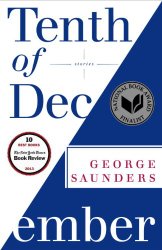







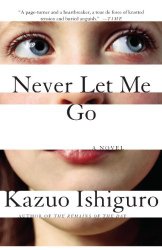






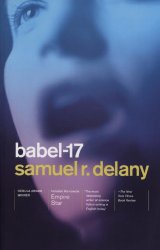
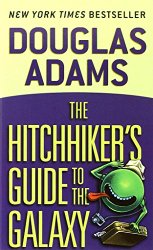
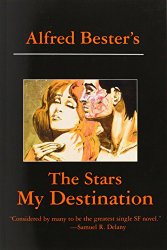

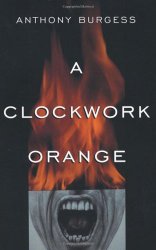

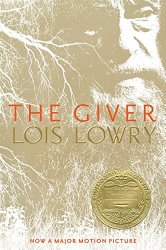








I think your definition of “soft” science fiction is wrong. I’d characterize many of these books as being hard SF.
Hard vs soft isn’t about the story being more about people and less about science; it’s about the science *in* the story being more about reality and less about fantasy.
Sounds like we disagree. Can you give me some examples of what books you consider to be soft SF?
Going through the list you have: Dune is somewhat soft. F451 and 1984, very hard. Flowers for Algernon, mostly hard. Brave New World, pretty hard. Gun, With Occasional Music, soft. Clockwork Orange, hard. Stars My Destination, hard (IIRC). HHGTG, soft. SIASL, soft. Handmaid’s Tale, hard. Ender’s Game, medium, though it tended to get softer in sequels. Rucker’s books I think could be considered hard. Frankenstein, hard. The others I haven’t read.
With a few exceptions, science fiction is speculation into technologies that might be developed, and about how those technologies affect people. The more changes the author pulls out of his hat, the greater the effort required for people with a scientific background to suspend their disbelief and the more temptation that’s placed in front of the author to pull a deus-ex-machina at the climax of the story. Faster-than-light travel? Well, can’t have a deep space story without it. Reactionless motors for spaceships? Hmkay, lump it in with FTL, it’s related. Food and other replicators? Hmkay… Tractor beams? Psychic powers? Okay, Star Trek is pretty soft.
(Note that there are a few science fiction novels based on technology we already have, given a bunch of development and expenditures; generation ships to the stars, for example.)
Your definition of hard science fiction seems to exclude stories about people, but really, any story that *isn’t* about people probably isn’t going to be a good story.
John, by your own definition almost none of the books on this list qualify as hard sci-fi. Having read most of them, there isn’t one there that spends any significant amount of time discussing technology, or physics, or even the underlying theories behind the way their worlds work.
I have been having a lot of arguments myself about hard vs soft scifi. As I originally understood the term, hard scifi meant that all the technology used in the story was scientifically possible. This means no psychic mindmelds or faster than light travel. Under that definition, Handmaid’s Tale and Fahrenheit 451 would be hard scifi, since there is no scientific reason why we couldn’t live in those dystopias. (We just need to prevent it from happening!)
Other people will insist that hard scifi focuses on technical detail. So as long as the reader gets a satisfying explanation for how the warp drive works, then you can have warp drive in a hard scifi story.
Until these terms get agreed upon definitions, then these terms will become meaningless. It’s like the “organic” label on food at the grocery store. You might think that all food is carbon based and therefore organic. But apparently the makers of certain products intend for it to mean something else entirely.
Is there any way to make it possible to click on a book and have it appear on a list that could be printed? Maybe this is “science fiction” but oh, so useful. I don’t always agree with your lists, but I love your site. Thanks.
For discussion’s sake, John Clute’s “Encyclopedia of Science Fiction” offers this regarding Soft SF: “This not very precise item of sf Terminology, formed by analogy with Hard SF, is generally applied either to sf that deals with the Soft Sciences or to sf that does not deal with recognizable science at all, but emphasizes human feelings.” Soft Sciences are listed as a poorly defined family including, but not restricted to, anthropology, linguistics and psychology. This is the distinction between Hard/Soft SF which I’ve understood.
Thanks for another rich list; I’ve enjoyed looking up some of your picks I had not yet read (“Eifelheim” is brilliant!). I would have to say that Edgar Pangborn’s “A Mirror For Observers” would fit well on this list, as well as it’s dark twin, “Hard to Be a God” by Arkady and Boris Strugatski. They’re both great tales of the Observer Effect.